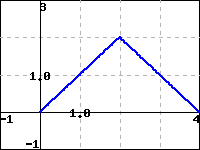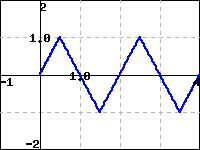1.
Which is a parametric equation for the curve \(16 = \left(x-9\right)^{2}+\left(y-2\right)^{2}\text{?}\)
- \(\displaystyle c(t) = \left(9+4\cos\mathopen{}\left(t\right),2+4\sin\mathopen{}\left(t\right)\right)\)
- \(\displaystyle c(t) = \left(9+16\cos\mathopen{}\left(t\right),2+16\sin\mathopen{}\left(t\right)\right)\)
- \(\displaystyle c(t) = \left(2+4\cos\mathopen{}\left(t\right),9+4\sin\mathopen{}\left(t\right)\right)\)
- \(\displaystyle c(t) = \left(2+16\cos\mathopen{}\left(t\right),9+16\sin\mathopen{}\left(t\right)\right)\)



